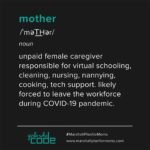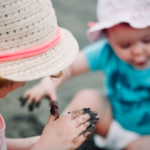When I told a good friend, and seasoned mother and traveller, that I was taking my newborn to Europe for two months during my maternity leave, she smiled and imparted some advice…
“Holidaying with a baby becomes so much easier the moment you accept this fact: YOU ARE NOT ON HOLIDAY!”
Like an increasing number of women, to me, taking an extended long haul trip during my maternity leave made perfect sense. I had months ahead of me with no work commitments, and the airline ticket for Baby Greta would be ridiculously cheap. And it seemed the perfect time to visit my sister in the Netherlands and show off the newest addition to my family.
There was just one thing about maternity leave travel that made me nervous: the small matter of travelling with a small baby.
But as I learned, surviving Europe with an infant is simply a case of knowing the rules and learning the tips from those who have been before.
Baby passports
All Australian citizens require their own passport to leave the country regardless of their age. That means your baby needs her own passport, and that means she’ll also need a passport photo.
All the requirements for an adult passport photo apply to an infant’s. The baby is not allowed to smile or show teeth, for example, and they must be looking directly into the camera. Try to book in a time when your baby is most content.
Both parents are required to sign the baby’s passport application, even if one parent has sole custody or the baby only has a relationship with one. Make sure you allow enough time to get the other signature, keeping in mind any potential delays.
Flying with a baby
Rules regarding airfares for infants differ from airline to airline, so check before booking, but generally on international flights, a ticket for a child under two years is 10 per cent of a full adult fare.
In most cases only one infant per adult is entitled to this discounted fare. If you are travelling solo with two babies under two, or twins, the other will be charged full adult fare.
On long haul flights, babies are provided with bassinets, which are attached to the bulkhead. Bassinets are an absolute godsend on long flights! The child is positioned close to you and she can see you at all times. Baby Greta loved it – she spent the whole flight sleeping or sitting up in the bassinet smiling at the other passengers.
The number of bassinets is limited, so make sure your airline accepts bookings.
Bassinets are not really suitable for children over about eight months of age. The standard size of bassinets on Qantas is 71cm x 31cm and 26cm deep, and have a weight limit of 11kg.
Packing for baby
Babies travelling on discounted fares are still allowed luggage. Most airlines allow 10kg of checked luggage (this can be added to your luggage allowance if the child doesn’t have her own case), one piece of hand luggage, a stroller and a port-a-cot.
The port-a-cot normally has to be checked in, but most airlines allow you to take the stroller right up to the door of the plane. Check your airline does – it can be a long walk to the gate when if you are forced to carry numerous pieces of hand luggage as well as a wriggly baby.
To reduce the amount of baby luggage, pack only what you will need for the flight, and a few change of clothes. Nappies, formula, wipes and baby food can all be purchased at your destination.
Consider also what you might be able to borrow at your destination. My sister lent us her port-a-cot and a friend of ours lent us a car seat they no longer needed. These two items alone drastically decreased the amount of luggage we needed to carry.
International travel challenges
Whilst travelling with a baby is much easier than you might think, there are particular challenges. Currently, governments around the world are cracking down on international children trafficking, and for identification purposes immigration offices will insist the baby is awake, even if that means waking her.
In these days of global terrorism, babies, it seems, are not above suspicion either. Some officials insist on checking nappies (for explosives, not poo explosions!), although we never encountered this. You are within your rights to request any search of your baby be conducted in a private room by a female officer.
Also, if you are travelling in the UK, customs officers will insist on seeing you (not the baby) drink from any bottles of milk you plan on taking on the flight.
Sleeping
Babies are notoriously bad sleepers and most parents find the thought of adding jetlag to the mix terrifying. Here’s the good news: babies normally have flexible sleep patterns, which is actually brilliant for changing time zones.
The general rule is to ‘follow the sun’ – that is, try to stay awake when the sun is up and sleep when it is dark – and your baby with adjust easily.
The increase in stimulation will be tiring for her and chances are within days, she will be happily sleeping when you do.
Getting around
Tripping around Europe is not the time to showing off your 4WD mega-buggy with state-of-the-art suspension and power steering. Invest in a cheap, light stroller that is easy to put up and down and carry around.
There are going to be times when your baby becomes tired and grumpy and just wants a cuddle from Mum, and it will inevitably happen when you have your hands full. Travelling with a baby harness will save your sanity. When the baby becomes clingy, simply strap her to your torso and continue on your way. Baby Greta toured London on my back and loved it. She got to see and experience everything, whilst feeling safe and snug next to Mum.
Given that you could be spending extended periods carrying your child in a harness, make sure you invest in one that is ergonomical, and if possible, get it professionally fitted.
Breastfeeding
If you are able to breastfeed while you are away, do. Aside from the health benefits for the baby, what can be more convenient than a ready-made food source available on demand?
A great tip for air travel is to breastfeed during takeoff and landing. The sucking motion helps equalise the pressure in the baby’s ears, reducing the risk of her becoming distressed.
Food and drink
Feeding your baby overseas invariably means buying pre-packaged. Thankfully for fussy mums like me, there are now several organic baby foods on the market. When it comes to formula, the real issue is the water you mix it with. It’s not always going to be possible to get your hands on cool boiled water when you need it, so make it yourself. If your hotel room has no tea facilities, ask the concierge if they have a kettle you can borrow or hire, or buy a cheap kettle and leave it behind when you check out.
…and if you are still nervous
Travelling around Europe confirmed for me what I suspected: people love babies and people want to help. I never struggled with Baby Greta because wherever we went people fell over themselves to help. And while I may not have been on vacation as I once knew it, together we created priceless memories.
By Margaret Ambrose





